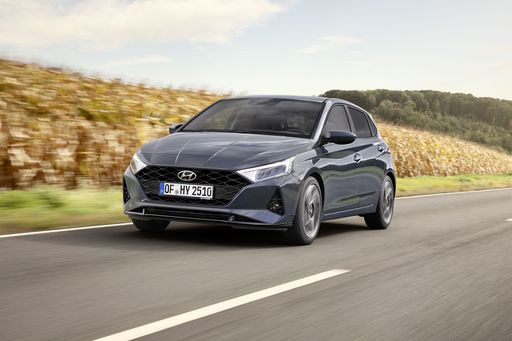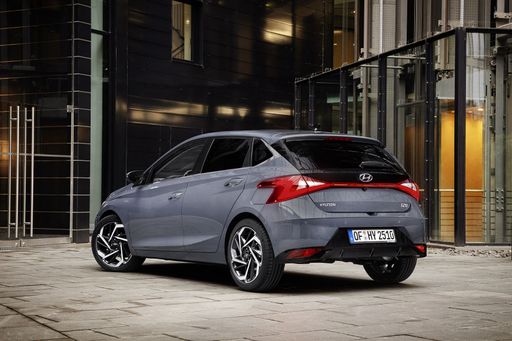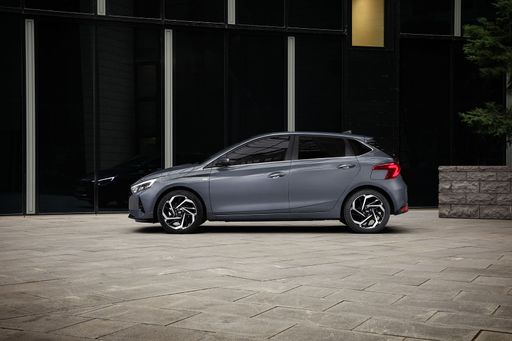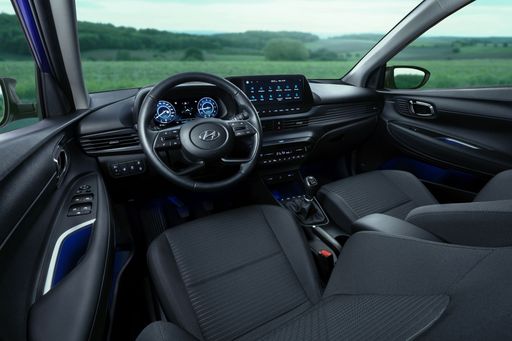Alfa Romeo Junior vs Hyundai i20 – Which one offers the better deal?
Everyday use, family trips or long-distance drives – here’s where the differences show.
Discover whether Alfa Romeo Junior or Hyundai i20 fits your lifestyle better.
Costs and Efficiency:
When it comes to price and running costs, the biggest differences usually appear. This is often where you see which car fits your budget better in the long run.
Hyundai i20 has a clearly advantage in terms of price – it starts at 17400 £, while the Alfa Romeo Junior costs 25700 £. That’s a price difference of around 8271 £.
Fuel consumption also shows a difference: Alfa Romeo Junior manages with 4.80 L and is therefore hardly perceptible more efficient than the Hyundai i20 with 5.20 L. The difference is about 0.40 L per 100 km.
Engine and Performance:
Power, torque and acceleration are the classic benchmarks for car enthusiasts – and here, some clear differences start to show.
When it comes to engine power, the Alfa Romeo Junior has a convincingly edge – offering 280 HP compared to 100 HP. That’s roughly 180 HP more horsepower.
In acceleration from 0 to 100 km/h, the Alfa Romeo Junior is convincingly quicker – completing the sprint in 5.90 s, while the Hyundai i20 takes 11.10 s. That’s about 5.20 s faster.
In terms of top speed, the Alfa Romeo Junior performs somewhat better – reaching 206 km/h, while the Hyundai i20 tops out at 183 km/h. The difference is around 23 km/h.
There’s also a difference in torque: Alfa Romeo Junior pulls convincingly stronger with 345 Nm compared to 200 Nm. That’s about 145 Nm difference.
Space and Everyday Use:
Whether family car or daily driver – which one offers more room, flexibility and comfort?
Both vehicles offer seating for 5 people.
In curb weight, Hyundai i20 is evident lighter – 1088 kg compared to 1380 kg. The difference is around 292 kg.
In terms of boot space, the Alfa Romeo Junior offers somewhat more room – 415 L compared to 352 L. That’s a difference of about 63 L.
In maximum load capacity, the Alfa Romeo Junior performs hardly perceptible better – up to 1280 L, which is about 115 L more than the Hyundai i20.
When it comes to payload, Hyundai i20 a bit takes the win – 472 kg compared to 420 kg. That’s a difference of about 52 kg.
Who comes out on top?
Overall, the Alfa Romeo Junior shows itself to be dominates this comparison and secures the title of DriveDuel Champion.
It convinces with the more balanced overall package and proves to be the more versatile choice for everyday use.
 @ Alfa Romeo / Stellantis Media
@ Alfa Romeo / Stellantis Media
Alfa Romeo Junior
Alfa Romeo Junior
The Alfa Romeo Junior captures the essence of Italian design with its sleek lines and compact dimensions, making it an icon of elegance and performance. With a spirited driving experience and a charming retro aesthetic, it appeals to enthusiasts and casual drivers alike. This delightful car embodies the brand's rich heritage while remaining a fun and engaging option for those seeking a unique automotive experience.
details @ Alfa Romeo / Stellantis Media
@ Alfa Romeo / Stellantis Media
 @ Alfa Romeo / Stellantis Media
@ Alfa Romeo / Stellantis Media
 @ Alfa Romeo / Stellantis Media
@ Alfa Romeo / Stellantis Media
Hyundai i20
The Hyundai i20 impresses with its sleek design and modern aesthetics, making it a stylish choice in the compact car segment. Its interior is thoughtfully designed, offering comfort and advanced technology for a pleasurable driving experience. The vehicle also stands out with its efficient performance and agile handling, making city driving a breeze.
details @ Hyundai Motor Company
@ Hyundai Motor Company
 @ Hyundai Motor Company
@ Hyundai Motor Company
 @ Hyundai Motor Company
@ Hyundai Motor Company
 @ Hyundai Motor Company
@ Hyundai Motor Company
 @ Hyundai Motor Company
@ Hyundai Motor Company
 @ Alfa Romeo / Stellantis Media
@ Alfa Romeo / Stellantis Media
|
 @ Hyundai Motor Company
@ Hyundai Motor Company
|
|
|
|
Costs and Consumption |
|
|---|---|
|
Price
25700 - 41600 £
|
Price
17400 - 24000 £
|
|
Consumption L/100km
4.8 - 5.4 L
|
Consumption L/100km
5.2 - 5.3 L
|
|
Consumption kWh/100km
15.1 - 17.5 kWh
|
Consumption kWh/100km
-
|
|
Electric Range
344 - 410 km
|
Electric Range
-
|
|
Battery Capacity
0.4 - 51 kWh
|
Battery Capacity
-
|
|
co2
0 - 119 g/km
|
co2
119 - 121 g/km
|
|
Fuel tank capacity
44 - 45 L
|
Fuel tank capacity
40 L
|
Dimensions and Body |
|
|---|---|
|
Body Type
SUV
|
Body Type
Hatchback
|
|
Seats
5
|
Seats
5
|
|
Doors
5
|
Doors
5
|
|
Curb weight
1380 - 1689 kg
|
Curb weight
1088 - 1190 kg
|
|
Trunk capacity
340 - 415 L
|
Trunk capacity
352 L
|
|
Length
4173 mm
|
Length
4065 - 4075 mm
|
|
Width
1781 mm
|
Width
1775 mm
|
|
Height
1505 - 1538 mm
|
Height
1450 - 1455 mm
|
|
Max trunk capacity
1205 - 1280 L
|
Max trunk capacity
1165 L
|
|
Payload
390 - 420 kg
|
Payload
450 - 472 kg
|
Engine and Performance |
|
|---|---|
|
Engine Type
Electric, Petrol MHEV
|
Engine Type
Petrol
|
|
Transmission
Automatic
|
Transmission
Automatic, Manuel
|
|
Transmission Detail
Dual-Clutch Automatic, Reduction Gearbox
|
Transmission Detail
Dual-Clutch Automatic, Manual Gearbox
|
|
Drive Type
Front-Wheel Drive, All-Wheel Drive
|
Drive Type
Front-Wheel Drive
|
|
Power HP
136 - 280 HP
|
Power HP
79 - 100 HP
|
|
Acceleration 0-100km/h
5.9 - 9.1 s
|
Acceleration 0-100km/h
11.1 - 13.7 s
|
|
Max Speed
150 - 206 km/h
|
Max Speed
166 - 183 km/h
|
|
Torque
230 - 345 Nm
|
Torque
113 - 200 Nm
|
|
Number of Cylinders
3
|
Number of Cylinders
3 - 4
|
|
Power kW
100 - 207 kW
|
Power kW
58 - 74 kW
|
|
Engine capacity
1199 cm3
|
Engine capacity
998 - 1197 cm3
|
General |
|
|---|---|
|
Model Year
2024 - 2025
|
Model Year
2024
|
|
CO2 Efficiency Class
A, C, D
|
CO2 Efficiency Class
D
|
|
Brand
Alfa Romeo
|
Brand
Hyundai
|
What drive types are available for the Alfa Romeo Junior?
Available configurations include Front-Wheel Drive or All-Wheel Drive.
The prices and data displayed are estimates based on German list prices and may vary by country. This information is not legally binding.
